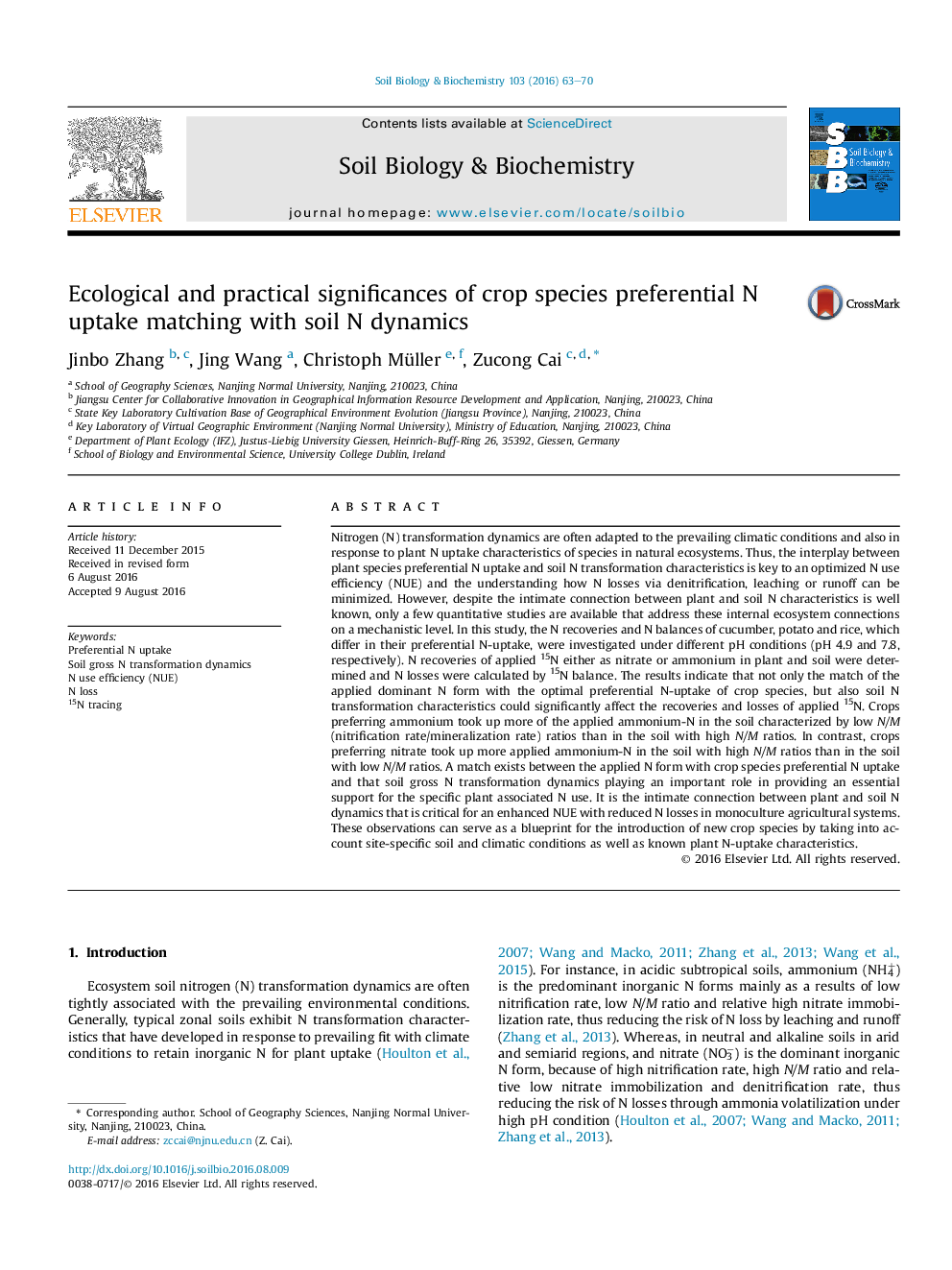| Article ID | Journal | Published Year | Pages | File Type |
|---|---|---|---|---|
| 8363193 | Soil Biology and Biochemistry | 2016 | 8 Pages |
Abstract
Nitrogen (N) transformation dynamics are often adapted to the prevailing climatic conditions and also in response to plant N uptake characteristics of species in natural ecosystems. Thus, the interplay between plant species preferential N uptake and soil N transformation characteristics is key to an optimized N use efficiency (NUE) and the understanding how N losses via denitrification, leaching or runoff can be minimized. However, despite the intimate connection between plant and soil N characteristics is well known, only a few quantitative studies are available that address these internal ecosystem connections on a mechanistic level. In this study, the N recoveries and N balances of cucumber, potato and rice, which differ in their preferential N-uptake, were investigated under different pH conditions (pH 4.9 and 7.8, respectively). N recoveries of applied 15N either as nitrate or ammonium in plant and soil were determined and N losses were calculated by 15N balance. The results indicate that not only the match of the applied dominant N form with the optimal preferential N-uptake of crop species, but also soil N transformation characteristics could significantly affect the recoveries and losses of applied 15N. Crops preferring ammonium took up more of the applied ammonium-N in the soil characterized by low N/M (nitrification rate/mineralization rate) ratios than in the soil with high N/M ratios. In contrast, crops preferring nitrate took up more applied ammonium-N in the soil with high N/M ratios than in the soil with low N/M ratios. A match exists between the applied N form with crop species preferential N uptake and that soil gross N transformation dynamics playing an important role in providing an essential support for the specific plant associated N use. It is the intimate connection between plant and soil N dynamics that is critical for an enhanced NUE with reduced N losses in monoculture agricultural systems. These observations can serve as a blueprint for the introduction of new crop species by taking into account site-specific soil and climatic conditions as well as known plant N-uptake characteristics.
Keywords
Related Topics
Life Sciences
Agricultural and Biological Sciences
Soil Science
Authors
Jinbo Zhang, Jing Wang, Christoph Müller, Zucong Cai,
